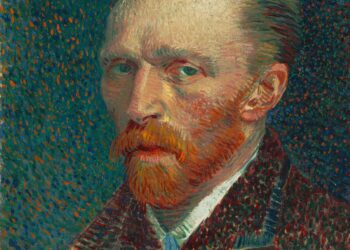A unit economic model is a business term for looking at a business in its most basic unit of revenue and costs. For a sandwich store, the unit economic model would be the revenue and cost of making a sandwich per customer. For most businesses, the unit economic model is relatively straightforward.
In healthcare, not so much.
If you try to create a unit economic model for an emergency room, then you would start by taking the population of the city or town in which that emergency room cares for patients, and calculate the projected number of patients by dividing the total population with the number of emergency rooms already in the city or town.
Just like calculating the number of customers visiting a sandwich store.
But patients are not customers, and the series of decisions and behaviors that prompt someone to visit the emergency room are vastly different than those that prompt someone to visit a sandwich store. People visit a sandwich store for one reason – to eat a sandwich. People visit the emergency room for a number of medical conditions – which is obvious enough – but what is not obvious is that the context of presenting medical condition defines the type of visit, which is difficult to accurately represent in a unit economic model.
A patient who presents with a dislocated finger is significantly different than a patient who presents with chest pain due to a heart attack (myocardial infarction). The treatment protocols, and the cost and time of care are all fundamentally different.
This may appear intuitive, and a more accurate unit economic model would differentiate among the different presenting symptoms and project different revenues and costs.
In this way, there may be ten to fifteen common presenting conditions which warrant their own unique unit economic model, and the overall model would be a probability adjusted average of all the segmented cases. For example, a model may state that 10% of all emergency visits are heart attacks, and calculate the specific unit economics for that segment of the patient population.
While this may seem correct, it underestimates true patient behavior in an emergency setting.
Patients behavior irrationally in highly emotional times – and there is nothing more emotional than a health emergency. People default to certain tendencies or patterns of thought in these moments, which largely determine the course of action that takes place.
If an elderly patient who is cared for by his daughter presents with a fall, then the daughter will decide where the patient should go for emergency care. She will rely on her previous experiences with her physicians and healthcare facilities. She will call friends she trusts in the healthcare field for advice. And she will make her decision based on what she feels is right in the moment.
There is nothing rational about those moments or about the decision-making process in general. She will take her father to the emergency room that feels right, that somehow has earned her trust. Based upon the series of snapshot judgments she makes in the moments between her father’s fall and her drive to the emergency room.
We have seen this behavior play out on a massive scale during the pandemic. Patients’ perceptions of healthcare influence behavior more than any clinical guideline or data point ever could. That is why people have developed wildly different opinions of masks, regardless of what the data shows.
It is time we formally incorporate these patterns of thought to more accurately represent unit economic models in healthcare.
A post-pandemic unit economic model in healthcare studies patient perceptions and the role it plays in healthcare decision-making. That is the most basic element in any healthcare model, the true unit economics of healthcare.
People do not visit the emergency room. Patients with specific medical conditions visit certain emergency rooms based upon a specific set of beliefs.
While each person is a unique composite of multiple perceptions, there are certain perceptions that impact patient decision-making more than others. These include hospital reputation, physician quality of care, and prior experiences, among others. They have varying degrees of influence at different points in time and for different conditions – becoming more or less impactful depending on the circumstances.
Therefore, to create a unit economic model for an emergency room, we should develop a framework of perceptions that represents the most common reasons why patients with specific clinical presentations someone may come to the emergency room. This includes a set of perceptions for patients who present with finger dislocations and a different set of perceptions for patients who present with chest pain.
For patients presenting with a finger dislocation, they may be more likely to visit the closest emergency room facility knowing their condition is not life threatening and can be fixed relatively easily. For patients presenting with chest pain, they may consider a location where their existing physicians see patients or a hospital known for the quality of care provided.
And to model realistic patient behavior, we should look at it like a ratio consisting of a subset of behaviors in reference to a perception.
Now, instead of modeling the most common presenting symptoms, we would model the most common presenting symptoms relative to the perceptions they most commonly engender. The Centers for Medicare and Medicaid services list data on the number of presenting symptoms and the cost of care. But to capture perceptions, we would conduct a series of surveys repeated over time to gauge how patients think in the moment when healthcare decisions are made, reflecting the predominant emotions expressed.
When the unit economic model is no longer a patient, but a ratio of patient symptom to perception, something unique happens to the model. It no longer becomes linear. Patient growth and hospital utilization, measured both in terms of clinical outcome and costs, do not increase at the same rate.
It becomes more complex. The rate of revenue growth can be faster or slower than the rate of cost growth. More patients do not necessarily translate to more profits. And the most profitable patients may no longer be as profitable if the volume increases or decreases.
If patients with chest pain net more profit to the hospital than patients with finger dislocations, then it would make sense to try to get more patients with chest pain. But at some point, the number of patients with chest pain exceeds the emergency room’s capacity to treat those patients at the same high standard of care.
When the quality of care drops, the perception of care drops as well – and the ratio of symptom to perception would changes. Much like the cost of care per medical condition changes over time, the perception of care also changes. And the relationship between how the two changes varies non-linearly. And the unit economic model becomes non-linear.
The whole system of patient care in acute settings is really an interdependent network of behaviors and interactions, defined by the interactions of decisions and perceptions.
The more accurately we model healthcare, the more complex the models become.
The more complex the models, the greater the role patient perceptions play in representing patient behavior.















